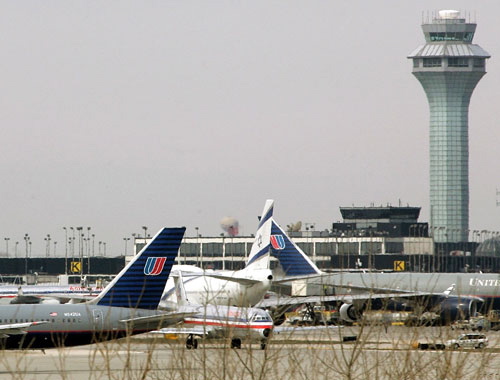Barrio de O'Hare Situado en el punto más Noroeste de la ciudad de Chicago
Muchos son los compradores de casas que se interesan por este barrio , pero muchos son los que se preocupan debido a la expansión del Aeropuerto de O´Hare debido a todas las expropiaciones de terrenos y casas , que no se sabe donde acabara.
El nuevo plan de O´Hare ha dejado sin casa a miles de familias cercanas al areopuerto debido a su expansión y han sido relocalizados a areas cercanas.
Varias leyes aplican a los compradores de Casas en O´Hare como insonoración de casas y otras muchas que pudieran ser no monetarias .
La venta de casas en O´Hare es fluida y se caracteriza por
- Alta calidad
- Buenas combinaciones de autopistas carreteras , trenes , Aeropuerto
- Colegios Buenos
- Alta calidad de Barrios
- Calles limpias y Cuidadas
La venta de casas en el aeropuerto de Ohare es una buena opción siempre encuando de haga en la cordenadas establacidas para no tener problemas en un futuro como pudiera ser Expansiones proximas.
Aiport History
The airport was constructed between 1942 and 1943, as a manufacturing plant for Douglas C-54s during World War II. The site was chosen for its proximity to the city and transportation. The two million square-foot (180,000 m²) factory needed easy access to the workforce of the nation's then-second-largest city, as well as its extensive railroad infrastructure. Orchard Place was a small pre-existing community in the area and the airport was known during the war as Orchard Place Airport/Douglas Field (hence the location identifier ORD). The facility was also the site of the Army Air Force's 803 Special Depot, which stored many rare or experimental planes, including captured enemy aircraft. These historic aircraft would later be transferred to the National Air Museum, going on to form the core of the Smithsonian National Air and Space Museum's collection.
Air Traffic Control Towers
The new FAA control tower (right) opened in early 1997. The old tower (left) is now used by the City of Chicago, to manage city vehicles engaged in ground operations.Douglas Aircraft Company's contract ended in 1945 and though plans were proposed to build commercial aircraft, the company ultimately chose to concentrate production on the west coast. With the departure of Douglas, the airport took the name Orchard Field Airport. In 1945, the facility was chosen by the City of Chicago, as the site for a facility to meet future aviation demands.
Matthew Laflin Rockwell, (1915–1988) was the director of planning for the U.S. Army Corps of Engineers and responsible for the site selection and design of O'Hare International Airport. He was the great grandson of Matthew Laflin, a founder and pioneer of Chicago, Illinois. Though its familiar three-letter IATA code ORD still reflects the early identity of the airport, it was renamed in 1949, after Lieutenant Commander Edward "Butch" O'Hare, USN, a World War II flying ace, who was awarded the Medal of Honor.
By the early 1950s, Chicago Midway International Airport, which had been the primary Chicago airport since 1931, had become too small and crowded, despite multiple expansions and was unable to handle the planned first generation of jets. The City of Chicago and the FAA began to develop O'Hare as the main airport for Chicago's future. The first commercial passenger flights were started there in 1955 and an international terminal was built in 1958, but the majority of domestic traffic did not move from Midway until completion of a 1962 expansion at O'Hare. The arrival of Midway's former traffic instantly made O'Hare the new World's Busiest Airport, serving 10 million passengers annually. Within two years, that number would double, with more people passing through O'Hare in 12 months than Ellis Island had processed in its entire existence. In 1997, annual passenger volume reached 70 million; it is now approaching 80 million. At this time of writing,[when?] United serves its flagship hub with 650 daily departures, but the carrier's utilization of O'Hare peaked at over 1,000 daily flights in 1994
O'Hare Airport is municipally connected to the city of Chicago via a narrow strip of land, approximately 200 feet (61 m) wide, running along Higgins Rd, from the Des Plaines river to the airport. This land was annexed into the city limits in the 1950s, to assure the airport was contiguous with the city to keep it under city control and for the massive tax revenue. The strip is bounded on the north by Rosemont and the south by Schiller Park.The CTA Blue Line was extended to the airport in 1984.
